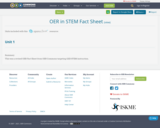
This was a revised OER Fact Sheet from OER Commons targeting GED STEM instruction.

This was a revised OER Fact Sheet from OER Commons targeting GED STEM instruction.
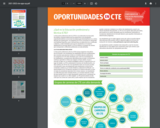
This four page publication reviews the 16 career clusters that apply to currently high-demand careers; it reviews how to identify and choose the right CTE program that fits each individual.
For more information about this and related resources, visit https://www.ecmc.org/studentseducators/student-resources/opportunities-guide-and-workbook
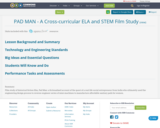
Film study of historical fiction film, Pad Man: a fictionalized account of the quest of a real-life social entrepreneur from India who ultimately used the engineering design process to reverse-engineer series of mini-machines to manufacture affordable sanitary pads for women.
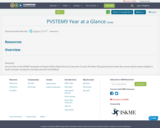
An overview of the STEM 9 program at Pequea Valley High School in Lancaster County, PA. Most 9th grade learners take this course which teaches Algebra I math concepts via physics concepts and tech ed building.
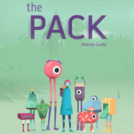
The Pack is a digital game that encourages learners to use Computational Thinking (CT) to solve problems they encounter in the futuristic world of Algos, where healthy ecosystems have faltered and water and food are scarce. Throughout the game, players must find food sources to attract their own Pack of Algos creatures. These creatures have various functions (like digging, moving, grabbing, and bumping) that can help the player collect seeds and bring water to dry areas. Creatures can be combined to form algorithms that perform complex tasks and overcome challenges. Players’ use of these algorithms is the key to finding all of the seeds and restoring harmony to Algos!
The Pack game and supplemental activities are designed to support middle schoolers in engaging with Computational Thinking concepts and practices while reinforcing basic scientific reasoning. The supplemental activities encourage players to reflect on their gameplay through the lens of Computational Thinking and to explore how solving problems in the game connects to the ways they can solve problems in class and beyond. The supplemental activities can be implemented in a classroom, as part of an after-school program, or even as an activity for families to do together at home.
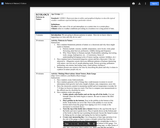
In this lesson, students will compare weather and climate, explain patterns over time and make observations by creating a rain gauge.
NGSS: 3-ESS2-1
Time: 55 minutes
Materials: laminated patterns in nature photos (photos included), thermometer for the class, duct tape, data sheet, rulers, sharpies, scissors, empty soda bottles for rain gauages, pebbles
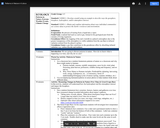
In this lesson students will learn about evaporation, fossil fuels, greenhouse gases, and the greenhouse effect. Patterns in nautre are discussed, including what is happening over time and why we should care.
NGSS: 5-ESS2-1, 5-ESS3-1
Time: 55 minutes - 1 hour
Materials: laminated patterns in nature photos (photos included), plastic cups, rulers, Sharpies
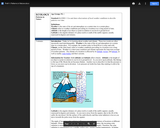
In this lesson, students will compare weather and climate, explain patterns over time and participate in a climate relay race.
NGSS: K-ESS2-1
Time: 45-50 minutes
Materials: globe, flashlight, three sets of clothing for the relay race (sunglasses, sunhat, swim suit, board shorts, rain jacket, hiking boots, umbrella, sweater, heavy jacket, warm hat, gloves, scarf, etc.)

Use 3doodler to understand the structure of dominoes, trominoes, and polyominoes as shapes made up of two or more squares.

The periodic table of chemical elements, created by Dmitry Mendeleev in 1869, is one of the most important achievements in modern science. To celebrate this achievement, BLS has created our own periodic table! Instead of elements, we have used Science, Technology, Engineering and Math (STEM) occupations. Workers in STEM occupations use science and mathematics to understand how the world works and to solve problems. Hover over an "element" or group to highlight that discipline.
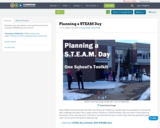
Planning tools, descriptions, and required materials for running a STEAM day at your school
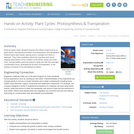
What do plants need? Students examine the effects of light and air on green plants, learning the processes of photosynthesis and transpiration. Student teams plant seeds, placing some in sunlight and others in darkness. They make predictions about the outcomes and record ongoing observations of the condition of the stems, leaves and roots. Then, several healthy plants are placed in glass jars with lids overnight. Condensation forms, illustrating the process of transpiration, or the release of moisture to the atmosphere by plants.
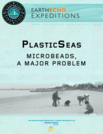
As the name suggests, microbeads are very small (microscopic) beads of plastic. Since they are particles of less than 1mm, they are almost impossible to capture as they enter household drains. This leaves these small, solid balls of plastic to enter our aquatic ecosystems where they are ingested by organisms and accumulated within the food web. In this activity, students are challenged to design and construct their own device to extract microplastics from cosmetic products such as facial cleansers, body wash, and toothpaste.
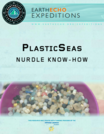
Students examine the nature of the problem and work collaboratively to create solutions to the issue of nurdles becoming evermore present in our oceans. Nurdles are small plastic resin pellets which are used to make many of the plastics we use every day. Unfortunately, they end up where they are not supposed to and cause a wide range of problems. Nurdle Know-How is a series of activities that will ultimately prepare students to design and build a nurdle capture system to clean up their local bay, harbor, or coastal waters.
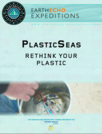
Students will follow the engineering design process to design and create solutions to plastic packaging problems. They will create and adapt suitable and sustainable designs that will consider alternatives to plastic packaging for example juice boxes, plastic straws, straw wrappers, bin liners, and single-use containers.
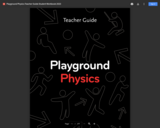
Playground Physics is an iPad and Progressive Web application (app) developed by the New York Hall of Science. The app is accompanied by a supplemental Teacher Guide for middle school teachers. The Playground Physics curriculum is a six-week supplemental physics curriculum, designed to be used alongside any existing science curricula in the middle grades. It includes a teacher guide and student work, and maps to the NGSS and NYSSLS. The curriculum is focused around three different units which each explore a major concept in physics (motion, force and energy) through a specific type of physical play (catching a ball, jumping, swinging).
Playground Physics is particularly well suited to supporting diverse learners because it leverages students’ abilities to playfully ask and answer their own questions to connect academic content to what they notice, describe and analyze about their own individual actions. Additionally, the multimodal nature of the program, which uses videos and images as well as kinesthetic exploration to build understanding, is less text-dependent than more traditional physics instructional materials.
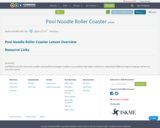
A STEM lesson the uses pool noodles and marbles to engage students in an activity that helps students to understand different types of energy and how to calculate speed.

The lessons in this unit were developed by teachers at Souhegan High School for junior/senior level Physics classes, to be taught during the first trimester of the 2016-17 school year. This unit culminates with small groups of students presenting their plans for the ideal power grid for the state of New Hampshire. While the anchor text and performance assessment may be specific to New Hampshire, texts specific to other regions are likely accessible through state universities, government websites and/or local publications, making this unit highly adaptable.

Did you know that it takes less than seven-seconds to decide whether you will buy most items? What influences us to make those snap decisions? Advertising? Packaging? The product? This theme unit investigated what drives consumer behaviors. Students examined often overlooked pieces of our environmental impact by analyzing the stuff in our lives what we own, buy, consume, and discard. Inspired by Annie Leonards short film The Story of Stuff (www.storyofstuff.com), we followed the life cycle of products from extraction, production, distribution, consumption, and disposal. We considered the hidden costs, human costs, and environmental costs of our stuff.
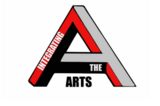
This resource was created by Moe Martin, in collaboration with Dawn DeTurk, Hannah Blomstedt, and Julie Albrecht, as part of ESU2's Integrating the Arts project. This project is a four year initiative focused on integrating arts into the core curriculum through teacher education, practice, and coaching.